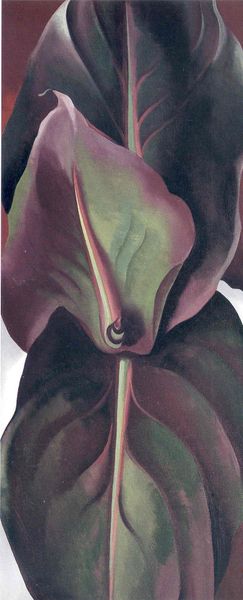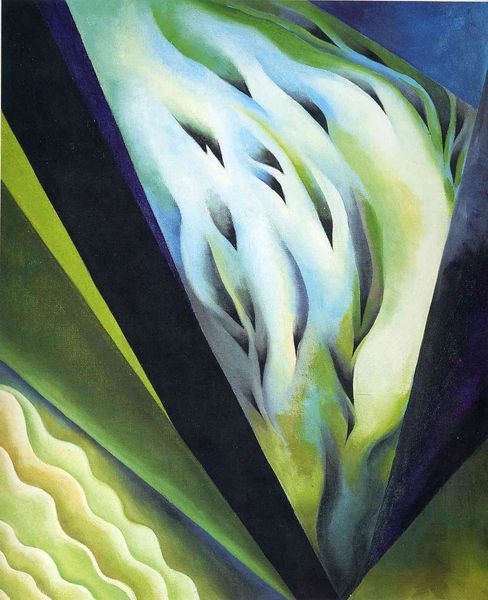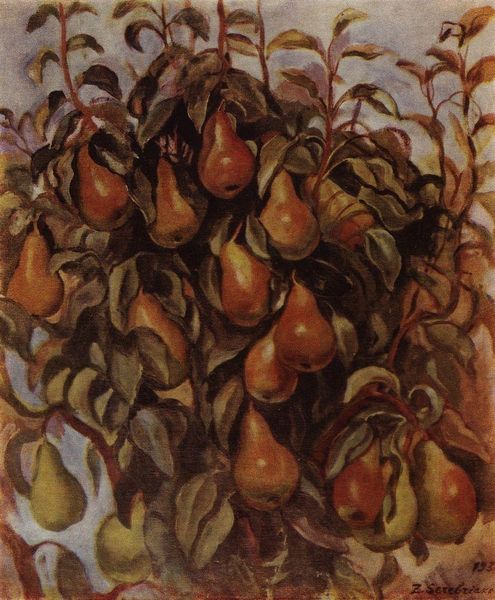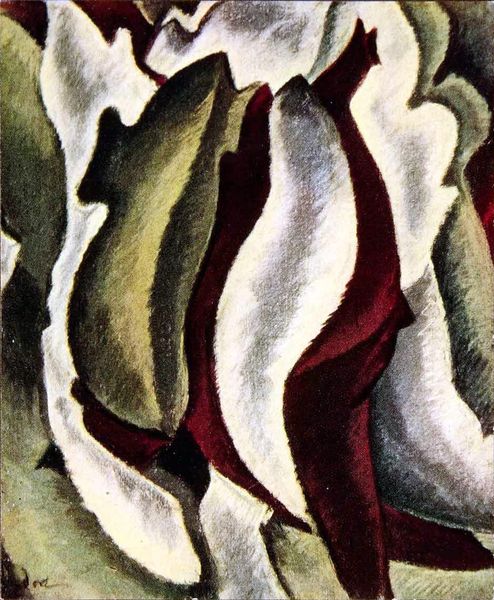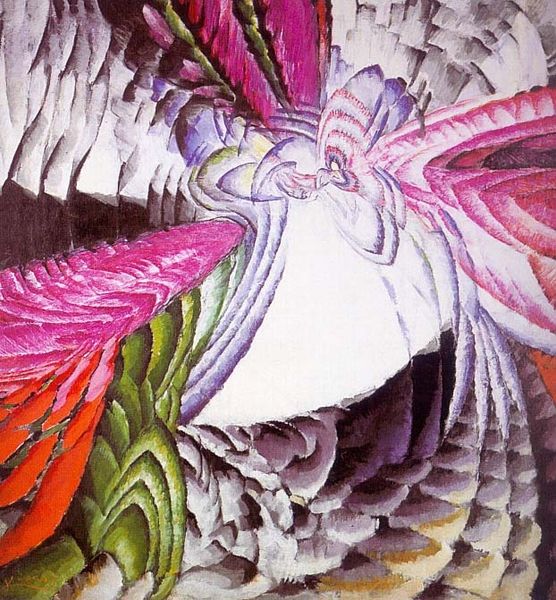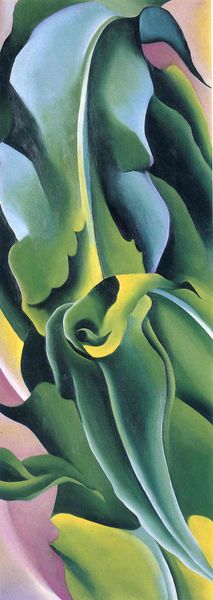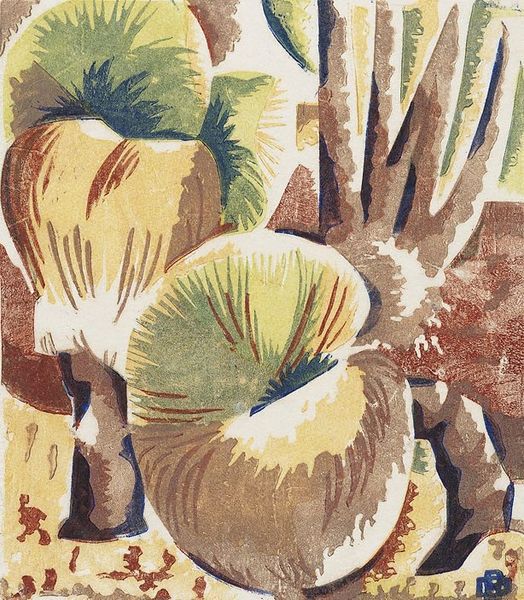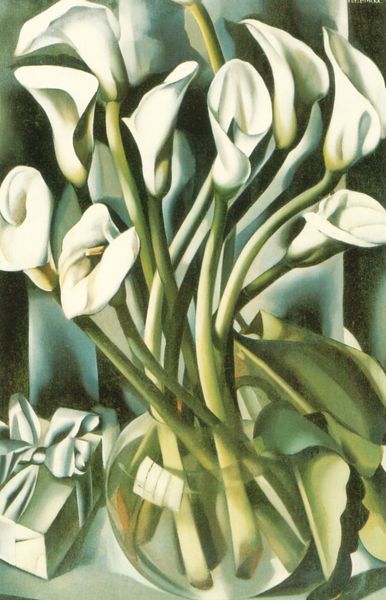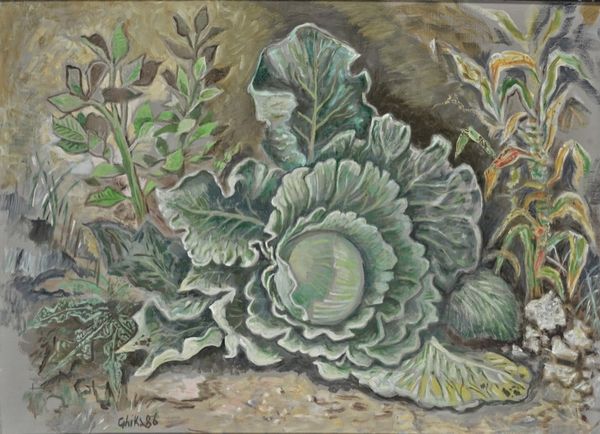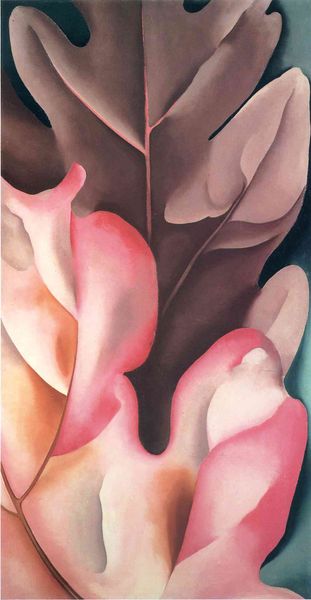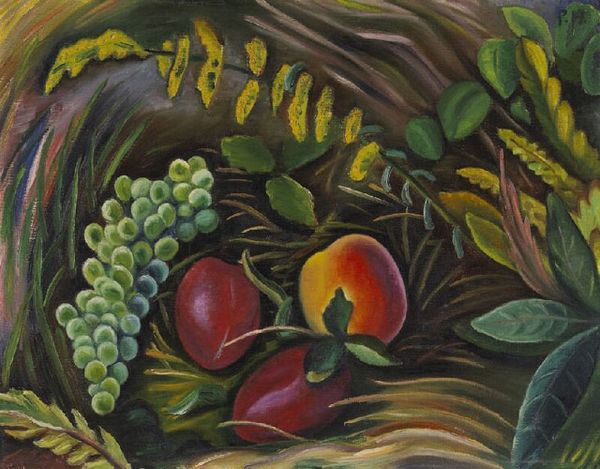
painting, oil-paint
#
painting
#
oil-paint
#
landscape
#
flower
#
geometric
#
plant
#
abstraction
#
botany
#
modernism
Copyright: Georgia O'Keeffe,Fair Use
Editor: So, here we have Georgia O’Keeffe’s "Jack-in-the-Pulpit II" from 1930, rendered in oil paint. Its zoomed-in perspective makes it seem both intimate and monumental. I'm really struck by the tension between its organic subject matter and the almost geometric abstraction. What do you see in this piece? Curator: Well, stepping back to O'Keeffe's context, her large-scale flower paintings were revolutionary in a time when discussions around women's sexuality were suppressed. Doesn't the central spadix feel almost defiant against the backdrop of that Georgia sky? This bold approach transformed the traditionally delicate flower, imbued with the politics of gender and challenging traditional notions of femininity. Do you notice how the cropping of the canvas removes any context other than the plant itself? Editor: Yes, it definitely isolates the flower, almost forcing us to confront it directly. But the plant is itself, undeniably sensual and intimate... What do you make of her choice of focusing on a flower, rather than other subject matter, in order to achieve this goal of speaking about feminine sexuality and suppression? Curator: I believe her emphasis is a reclamation of the female gaze and lived experience. By transforming something typically considered passive and decorative into something powerful and assertive, O’Keeffe is in effect forcing a dialogue regarding women being something other than "passive" or "decorative." Editor: That makes so much sense. I hadn’t thought about it as actively disrupting that passive role, but more a celebration... I like how you've shifted my perspective to considering it in terms of defiance, rather than solely admiration. Curator: It's both! The defiant part wouldn't carry the same power without the celebration, without her love for what the natural world offers. It is definitely a potent mix when considered within a historical lens.
Comments
No comments
Be the first to comment and join the conversation on the ultimate creative platform.
